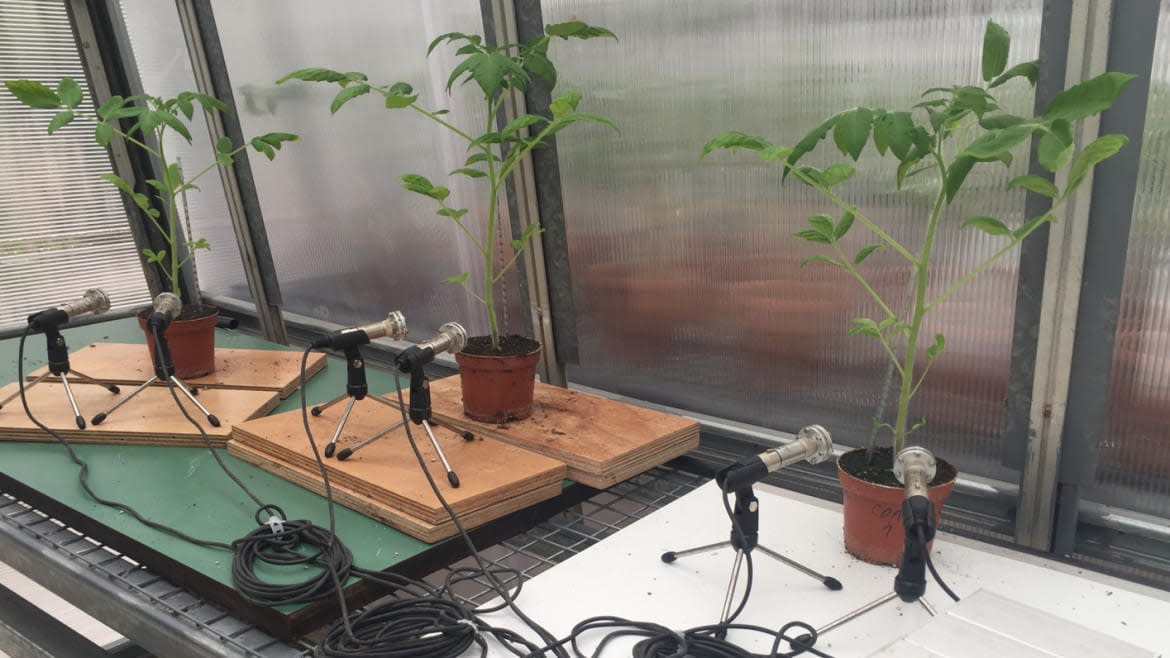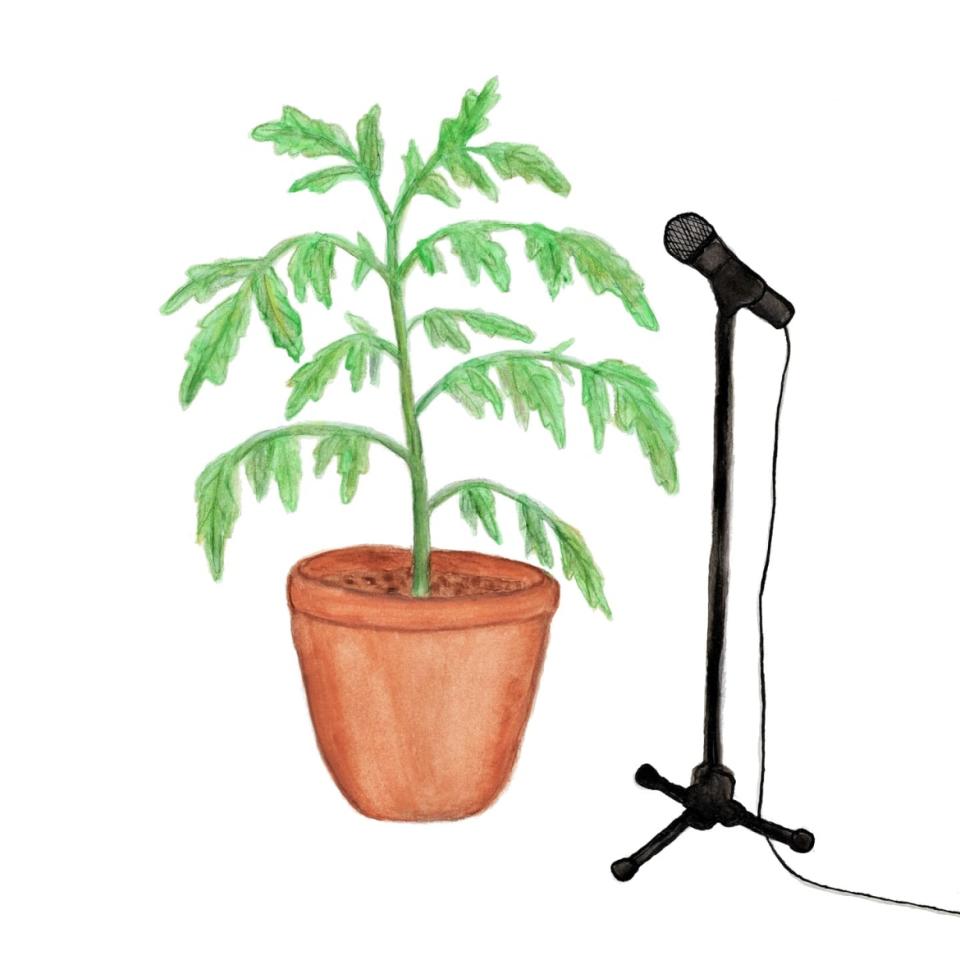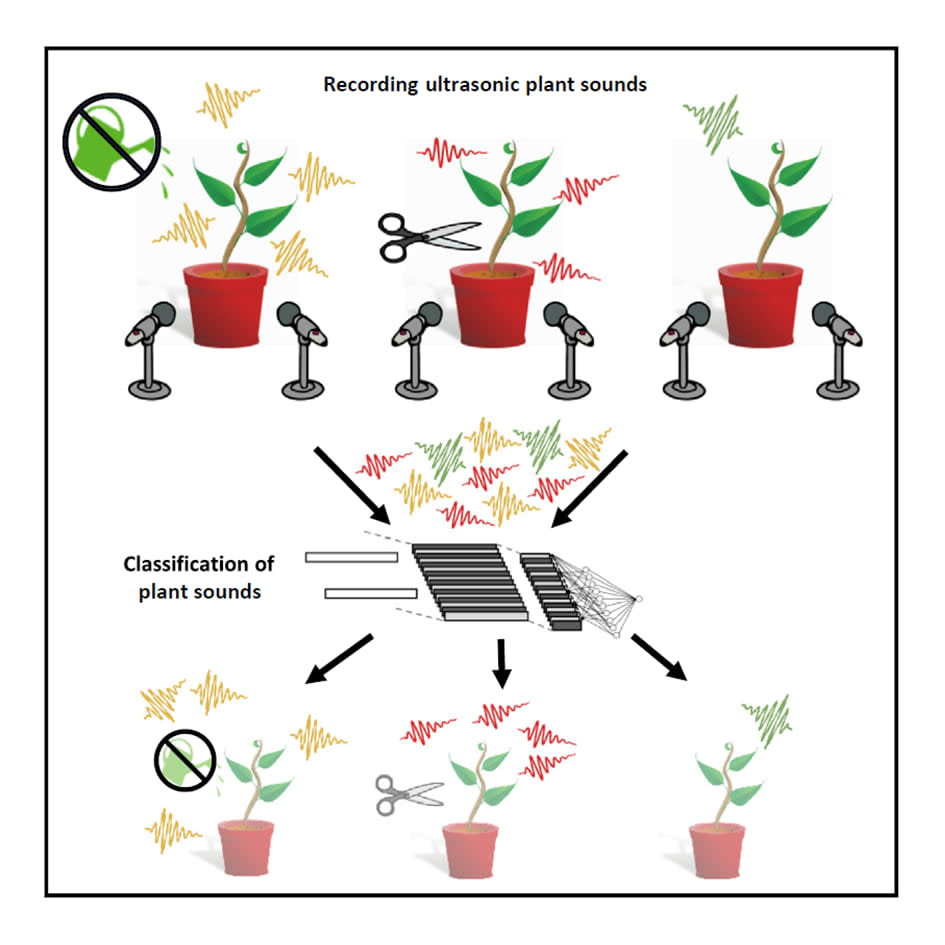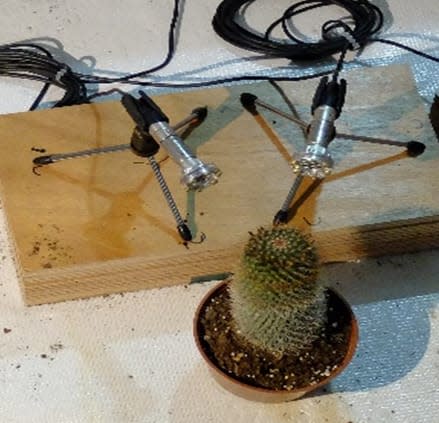Listen to the Noises Plants Make When They’re Stressed Out

When a plant is having a rough time, it cries out in pain. I don’t mean that metaphorically—it’s a documented phenomenon. Biologists at Tel-Aviv University have previously demonstrated that plants experiencing stressful conditions will emit ultrasonic sounds through the ground that humans can’t hear.
That same team of biologists has just unearthed a new revelation: Those ultrasonic rumblings aren’t just emitted through the ground, but through the air as well. And they’re detectable from more than a meter away.
“Even in a quiet field, there are actually sounds that we don't hear, and those sounds carry information,” co-author Lilach Hadany, an evolutionary biologist at Tel Aviv University, said in a statement.
The fact that these noises are airborne means “there are animals that can hear these sounds, so there is the possibility that a lot of acoustic interaction is occurring.” Plant noises may be an underrated method to measure when an ecosystem is mired in less-than-ideal conditions that could eventually lead to more deleterious consequences.
For this latest study, published Mar. 30 in Cell, Hadany and her team ran observations on tomato and tobacco plants that have been stressed from either dehydration or from having their stems severed. Microphones were used to record healthy and stressed plants in both lab-controlled, soundproofed acoustic chambers; and in greenhouse environments with normal ambience. Recordings for these tests were used to train a machine-learning algorithm that could better distinguish the differences between the healthy plants, the dehydrated ones, and the ones that had been cut.
What they found was that the stressed plants emit a noise that sounds a lot like bubble-wrap being popped. A stressed plant will emit between 30 to 50 of these noises per hour at irregular intervals. Unstressed plants make these same clicking noises, but much more rarely.

An cute illustration of the recording tests.
Dehydrated plants start to make more of these noises before they even show visible signs of dehydration, and the noise peaks after about five days of no water. Afterward, as the plant deteriorates and the noises become less frequent. In addition, the algorithm learned that the noise from dehydration was different from the noise caused by stem cutting. And it could also tell the difference between the clicks emitted between the two species of plants tested.
This clicking is actually on par with the volumes of normal human conversation—but the frequency of the noise is beyond the scope of what humans can hear. Crucially, many other species can hear frequencies beyond the human range. And it’s these animal species—and possibly other plants themselves—that may be responding to the noises in ways we have yet to understand.

“It’s possible that other organisms could have evolved to hear and respond to these sounds,” said Hadany. “For example, a moth that intends to lay eggs on a plant or an animal that intends to eat a plant could use the sounds to help guide their decision.”
And although the study’s results focused on tomato and tobacco plants, the research team did also make recordings of noises emitted from other plants put in stressful conditions, including corn, wheat, grape, and cactus plants.

A cactus being recorded. The future of podcasts will be weird.
What’s causing the clicks? The researchers aren’t clear on that, but they think it has to do with the formation and bursting of air bubbles in the plant’s vascular system that transports water and nutrients throughout the body.
And that’s just the tip of the iceberg of questions. The authors of the study still aren’t sure whether these noises are just a side-effect of stress, or an evolved trait to allow communication between the plants and other organisms.
Farmers Hate This Plant. Skincare Nuts Will Love It.
It’s interesting science on its own, but the practical implications may also prove huge. Sound recording of plants could tremendously aid farming, by giving them a heads up when crops are facing hydration issues or other issues that haven’t yet been visually observed. Ecologists could also use sound records to get a heads up to gauge if the health of an ecosystem is beginning to face a downturn, in order to prepare early solutions.
Those kinds of real-world applications are too early to think about for now. But Hadany and her colleagues’ work has seemingly only opened the door to a brand new way of studying plant life.
Or at the very least, they’ve showed us what a weirder future of podcasts might look like.
Get the Daily Beast's biggest scoops and scandals delivered right to your inbox. Sign up now.
Stay informed and gain unlimited access to the Daily Beast's unmatched reporting. Subscribe now.


